Chris Hedges's Blog, page 176
August 18, 2019
Hundreds of Thousands Turn Out for Peaceful Hong Kong Protest
HONG KONG—Hong Kong streets were turned into rivers of umbrellas on Sunday as hundreds of thousands of people marched through heavy rain down a major road in the Chinese territory, where massive pro-democracy demonstrations have become a regular weekend activity. Organizers said at least 1.7 million participated, though the police estimate was far lower.
The assembly was peaceful, with no reports of violence, making for a rare calm weekend in a protest movement that has been marked by violent clashes with police. Law enforcement officers kept a low profile, with no riot police seen from the procession’s main routes. When stragglers convened outside a government complex in the late evening, other protesters urged them to go home.
Demonstrators who were shining laser pointers at a government building were convinced to leave, prompting applause from others in the group.
“We hope to see whether the government gives a response to this peaceful protest,” said Michael Leung, a 24-year-old who was ushering his fellow demonstrators away. “If we get a negative response, we cannot control the next (gathering).”
Organizer Bonnie Leung of the Civil Human Rights Front said earlier in the day that she hoped there would be no “chaotic situations.”
“We hope we can show the world that Hong Kong people can be totally peaceful,” she said.
The Civil Human Rights Front had organized three previous massive marches in Hong Kong since June. The movement, however, has been increasingly marked by clashes with police as demonstrators vent their frustrations over what they perceive to be the government’s blatant refusal to respond to their demands.
“Peace is the No. 1 priority today,” said Kiki Ma, a 28-year-old accountant who participated in the march. “We want to show that we aren’t like the government.”
While police granted approval for the rally, they didn’t approve an accompanying march. Demonstrators nevertheless fanned out and filled the streets, as there was not enough space at the designated assembly area.
Public transit trains did not stop at stations near the assembly because of overcrowding.
Jimmy Shan of the Civil Human Rights Front said the group estimated that at least 1.7 million took part in the rally. He said the figure did not include those who were not able to make it to Victoria Park — where the march began — due to traffic constraints.
Police, whose crowd figures are generally lower than the organizers’ estimates, said the turnout at the assigned location and during the designated time period was 128,000. Many protesters, however, did not follow the pre-approved guidelines laid out by the authorities.
In Beijing, You Wenze, a spokesman for China’s ceremonial legislature, condemned statements from U.S. lawmakers supportive of Hong Kong’s pro-democracy movement.
You called the lawmakers’ comments “a gross violation of the spirit of the rule of law, a blatant double standard and a gross interference in China’s internal affairs.”
He said that Hong Kong’s 7.5 million people and the Chinese population as a whole rejected the actions of a “very small group of violent protesters” as well as “any interference of foreign forces.”
You did not mention any specific lawmaker, but numerous U.S. senators and Congress members, including House Speaker Nancy Pelosi, have affirmed the U.S. commitment to human rights and urged Hong Kong’s government to end the standoff.
Congress also has the power to pass legislation affecting Hong Kong’s relationship with the U.S. in ways that could further erode the territory’s reputation for stability and rule of law. That includes the recent reintroduction of the Hong Kong Human Rights and Democracy Act in Congress, which would among its other provisions require the secretary of state to issue an annual certification of Hong Kong’s autonomy to justify special treatment afforded to the city.
More directly, President Donald Trump could simply issue an executive order suspending Hong Kong’s special trading status with the U.S., a move that could have a devastating effect on the local economy at a time when Beijing and Washington are engaged in a bitter trade war.
A former British colony, Hong Kong was returned to Beijing in 1997 under the framework of “one country, two systems,” which promised residents certain democratic rights not afforded to people in mainland China. But some Hong Kongers have accused the Communist Party-ruled central government of eroding their freedoms in recent years.
The protest movement’s demands include the resignation of Hong Kong leader Carrie Lam, democratic elections and an independent investigation into police use of force.
Harley Ho, a 20-year-old social work student who attended Sunday’s rally, said protesters were undeterred by the rain and would not rest until their demands were met.
“We will stand here, we will take action until they respond to us,” she said. “In the rain, our spirit becomes stronger.”
Members of China’s paramilitary People’s Armed Police force have been training for days across the border in Shenzhen, including on Sunday morning, fueling speculation that they could be sent in to suppress the protests. The Hong Kong police, however, have said they are capable of handling the demonstrations.
___
Associated Press journalists Ken Moritsugu, Yves Dam Van and Phoebe Lai in Hong Kong, Dake Kang in Shenzhen, China, and Christopher Bodeen in Beijing contributed to this report.

Sanders’ Criminal Justice Plan Would Radically Cut Prison Population
COLUMBIA, S.C. — Democratic presidential candidate Bernie Sanders is proposing a criminal justice overhaul that aims to cut the nation’s prison population in half, end mandatory minimum sentencing, ban private prisons and legalize marijuana. He says the current system does not fairly treat people of color, addicts or the mentally ill.
“We have a system that imprisons and destroys the lives of millions of people,” Sanders told The Associated Press before the planned released of his proposal Sunday. “It’s racist in disproportionately affecting the African American and Latino communities, and it’s a system that needs fundamental change.”
Related Articles

The Ghastly Return of the Federal Death Penalty
by

What's Behind California's Alarming Spike in Prison Homicides?
by

The Liberal Betrayal of America’s Most Vulnerable
by Robert Scheer
Sanders was promoting the plan during a weekend of campaigning in South Carolina, where the majority of the Democratic electorate is African American. The Vermont senator, who won the support of some younger black Democrats during the 2016 primary, has stepped up his references to racial disparities, particularly during stops in the South and urban areas.
As president, Sanders said he would abolish mandatory minimum sentencing and reinstate a federal parole system, end the “three strikes law” and expand the use of alternative sentencing, including community supervision and halfway houses. The goal is to reduce the prison population by one-half.
“A very significant number of people who are behind bars today are dealing with one form or another of illness,” Sanders said. “These should be treated as health issues, not from a criminal perspective.”
According to the National Alliance on Mental Illness , 2 million people with mental illness are booked into jails annually.
Taking aim at what his proposal calls “for-profit prison profiteering,” Sanders would ban private prisons, make prison phone calls and other inmate communications free, and audit prison commissaries for price gouging and fees.
The plan would legalize marijuana and expunge previous marijuana convictions, and end a cash bail system that Sanders says keeps hundreds of thousands who have not been convicted of a crime languishing in jail because they cannot afford bail.
“Can you believe that, in the year 2019, 400,000 people are in jail awaiting a trial because they are poor?” Sanders said. “That is a moral outrage, it is a legal outrage.”
According to the Prison Policy Initiative , more than 460,000 people are being held in local jails around the country while they await trial, with a median bail amount of $10,000 for felony offenses.
Sanders wants to improve relations between law enforcement agencies and the communities they serve. To do that, he proposes to end federal programs that provide military equipment to local police forces, establish federal standards for the use of body cameras, provide bias training and require that the Justice Department review all officer-involved shootings.
“You have a lot of resentment in minority communities all over this country, who see police forces not as an asset but as an invading force,” Sanders said.
On capital punishment, Sanders’ plan formalizes his call to end the federal death penalty and urges states to eliminate the punishment as well.
“When we talk about violence in society and trying to lower the levels of violence, it is not appropriate that the state itself is part of capital punishment,” Sanders said.
Sanders said that over the long term, his plan will save the public money because of reductions to overall incarceration costs.
“It will cost money but it will pay for itself many, many times over,” Sanders said. “Locking people up is very, very expensive.”
___
Kinnard can be reached at http://twitter.com/MegKinnardAP

Why Lula Thinks the U.S. Is Behind ‘Operation Car Wash’
For former President Luiz Inácio Lula da Silva, events in Brazil since the 2016 coup that deposed President Dilma Rousseff were orchestrated by the US government. “Everything that is happening has the hand of the United States on it…. The US created the Lava Jato investigation to take our oil,” he said, speaking for the first time after Supreme Court (STF) prevented his transfer to a São Paulo prison. Lula’s interview, with veteran journalist Bob Fernandes, aired oln TVE, a public television station from Bahia, on Friday, August 16th.
It was the former President’s first interview for a public television station since his arrest on April 7, 2018. In the interview, the former president said he does not know how the information revealed by the Intercept website in recent weeks arrives to the Supreme Court, but that, after hearing the messages between former judge Sergio Moro and prosecutor Deltan Dallagnol, it should make corrections to his conviction.
Related Articles
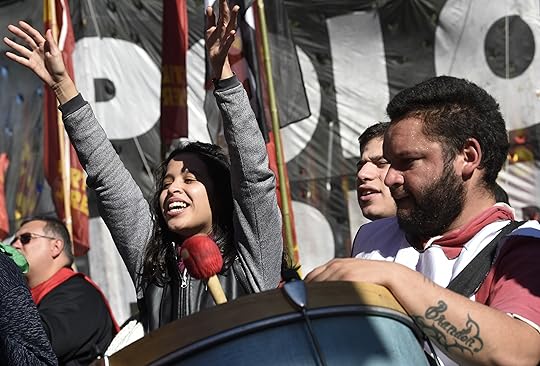
'The G-20 Is Death,' and Other Lessons in Global Capitalism
by Jacob Sugarman
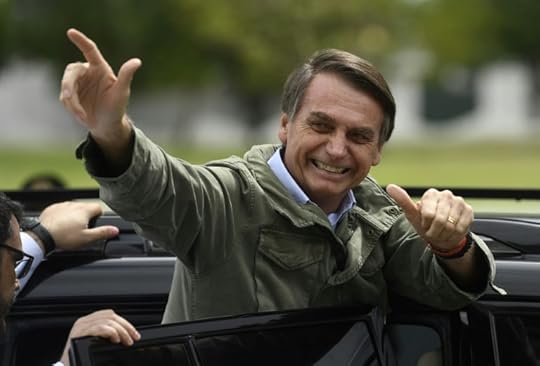
Bolsonaro's Brazen Meeting With the CIA
by
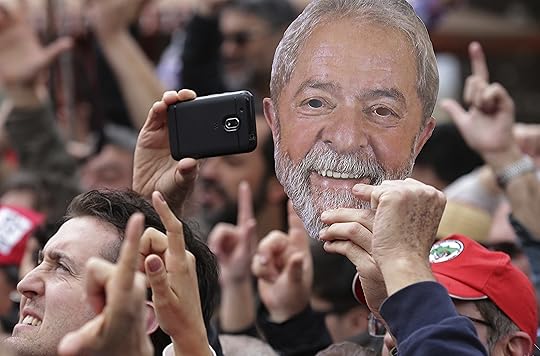
Brazilian Labour Party Issues Explosive Charges Against U.S.
by
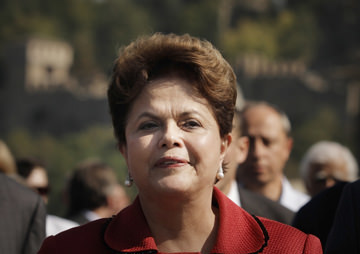
Overthrowing Brazil's Dilma Rousseff: It’s Class War
When asked about Lava Jato task force leader, Federal Prosecutor Deltan Dallagnol, Lula said that, “since the day he gave a press conference saying he had no evidence against me and was only acting on his convictions, the National Prosecutors Council should have removed him.”
Regarding economic policy, Lula stated that Minister Paulo Guedes is trying to “destroy the Brazilian economy”, and asked “where are the nationalist military officers?”.
Regarding the reliance on coerced plea bargain testimonies in the Lava Jato operation, he said that “what happened is that was witnesses were awarded [with sentence reduction and illicit asset retention] without having to prove anything they said.”
On the recent Intercept revelations that former judge Sérgio Moro allegedly ordered the Lava Jato prosecutors not to seize impeachment architect and Congressional Leader Eduardo Cunha’s cellphones, he asked, “do you think it is normal for the Federal Police tot go to my house and seize everything, but then not have the courage to confiscate Eduardo Cunha’s phone?”
On the issue of TV Globo and journalistic bias, Lula said, “ “Bolsonaro was the monster that emerged, but it was not what Rede Globo had planned for. They didn’t have the courage to launch [TV variety show producer] Luciano Huck as their candidate. And so far, as of today [August 14th] astonishingly Globohasn’t published any of the messages revealed by Intercept.”
The full two hour interview with the Lula can now be seen below:
This article, from Rede Brasil Atual, was translated and edited by Brian Mier and can be seen in its original Portuguese here.

Trump Is Betraying America’s Ranchers With NAFTA 2.0
“MAGA,” blusters Donald Trump — Make America Great Again!
America’s ranching families, however, would like Trump to come off his high horse and get serious about a more modest goal, namely: Make America COOL Again.
Related Articles
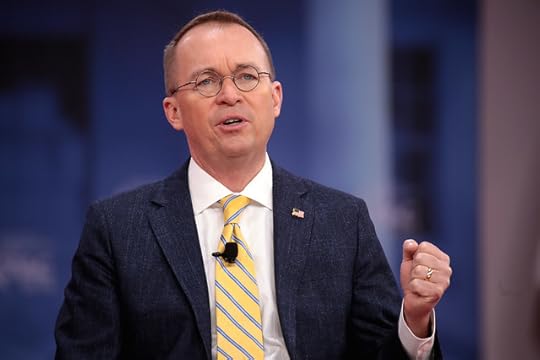
NAFTA 2.0 Is Just Another Gift to the 1 Percent
by

Does Trump's NAFTA Correct the Damage Clinton Did to Workers?
by Robert Scheer
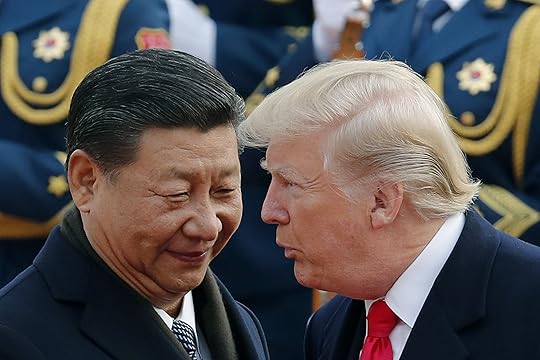
Trump's Trade Policy Is Accelerating America's Decline
by
COOL stands for Country-of-Origin-Labeling, a straightforward law simply requiring that agribusiness giants put labels on packages of steak, pork chops, and other products to tell us whether the meat came from the United States, China, Brazil, or wherever else in the world.
This useful information empowers consumers to decide where their families’ food dollars go. But multinational powerhouses like Tyson Foods and Cargill don’t want you and me making such decisions.
In 2012, the meat monopolists got the World Trade Organization to decree that our nation’s COOL law violated global trade rules — and our corporate-submissive congress critters meekly repealed the law.
Then came Donald Trump and his Made-in-America campaign, promising struggling ranchers that he’d restore the COOL label as a centerpiece of his new NAFTA deal. Ranching families cheered because getting that “American Made” brand on their products would mean more sales and better prices.
But wait — Trump has now issued his new U.S.-Mexico-Canada Agreement, and — where’s the beef? In the grandiose, 1,809-page document, COOL is not even mentioned once.
Worse, it slaps America’s hard-hit ranching families in the face, because it allows multinational meatpackers to keep shipping foreign beef into the U.S. market that doesn’t meet our own food safety standards. Aside from the “yuck” factor and health issues, this gives Tyson and other giants an incentive to abandon U.S. ranchers entirely.

Gas-Fueled Cars Will Soon Be a Thing of the Past
The days of oil as a fuel for cars, whether petrol or diesel, are numbered − because the economies offered by wind and solar energy and other cheap renewables, combined with electric vehicles, are irresistible, a French bank says.
BNP Paribas Asset Management calculates that oil majors like Exxon, BP and Shell will have to produce petrol from oil at $10 a barrel (the current price is $58) to compete with electricity on price, while for diesel, it says, oil can cost no more than $19 a barrel.
Related Articles

The Financial Secret Behind Germany’s Green Energy Revolution
by Ellen Brown
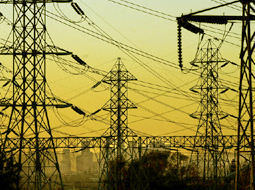
Who Are You Calling a Gas Guzzler?

Global Warming Is Found to Be Past 'Tipping Point'
“The oil industry has never before in its history faced the kind of threat that renewable electricity in tandem with electric vehicles poses to its business model,” the bank says. Electric vehicles (EVs) could easily replace 40% of the current market for crude oil.
The far lower cost of driving electric vehicles, plus the environmental benefits of cleaner air and the reduction in carbon emissions, will make it overwhelmingly attractive to governments to switch from fossil fuels to renewables for powering the world’s light vehicles.
“The economics of oil for gasoline and diesel vehicles versus wind- and solar-powered EVs are now in relentless and irreversible decline”
Warnings that Big Oil’s position is precarious have been sounding for several years. Some see the global industry reaching its peak within the next decade. In several countries car plants are being converted to all-electric production, a move perhaps prompted by a wish to regain market share after a less than happy episode in consumer relations.
But the bank’s report for professional investors, Wells, Wires, and Wheels, will certainly make bleak reading for the oil industry. Its conclusions are based on the bank’s calculations of how much it costs to get energy to the car wheels.
Its analysis concludes that “after adjusting for all of the costs and all of the energy losses of delivering oil from the well to the wheels on the one hand, and renewable electricity to the wheels of EVs on the other, new wind and solar projects combined with EVs would deliver 6.2 to 7 times more useful energy than petrol”.
This is with oil at its current market price of $60 a barrel. Renewables would also provide 3.2 to 3.6 times more power than diesel for the same cost.
Rising efficiency
The report says: “Moreover, this is on the basis of the costs and efficiency rates of the renewable electricity technologies as they exist today. Yet, over time, the costs of renewables will only continue to fall, while their efficiency rates will continue to rise.”
The report concedes that at the moment the oil industry has huge advantages of scale, because it is already servicing the world’s vehicle fleet. To take its business away, renewables have to scale up and provide the quantity of electricity and the number of charging points required for a mass electric vehicle market.
It argues, however, that oil has a major disadvantage. For every dollar spent at the pump on petrol, nearly half that cost has already gone on refining the oil, transporting it to the pump, marketing and tax. Electricity on the other hand is delivered to cars along wires at only a tiny fraction of the cost of oil-based fuels.
The bank concludes that the oil industry also has another huge disadvantage. It has to decide on future investments in new oil fields without knowing in advance the occasional wild fluctuations in oil price.
Declining oil yield
Each year the oil majors have to make such decisions about fields which need to be added to production to replace the 10% annual decline in the yield from old fields, leaving them working 10 years in advance.
By the bank’s calculations, unless the new oil can be brought on stream at $10 a barrel or less, the oil companies will have to sell petrol and diesel at a loss to compete on price with electric cars running on renewables.
Investment decisions made now on the basis of an oil price of $60 a barrel risk creating assets that cannot be sold profitably and would have to be left in the ground.
The report says: “We conclude that the economics of oil for gasoline and diesel vehicles versus wind- and solar-powered EVs are now in relentless and irreversible decline, with far-reaching implications for both policymakers and the oil majors.”

Corporate Media Are Downplaying Resistance to Brazil’s Far-Right Leader
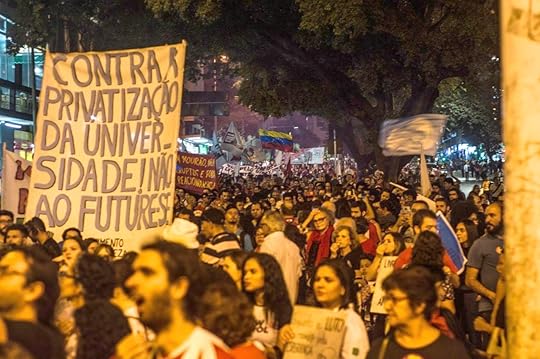
Protesters march against the Brazilian president in Belo Horizonte, one of 211 cities where demonstrations took place. (Dowglas Silva)
Hundreds of thousands of Brazilians took to the streets of 211 cities on Aug. 13 to protest far-right Brazilian President Jair Bolsonaro’s austerity cuts and privatization plans for the public university system. It was the third in series of national education strikes, dubbed “the Education Tsunamis,” organized by national students unions together with teachers unions affiliated with the Central Ùnica de Trabalhadores (Unified Workers Central/CUT)—the second-largest labor union confederation in the Americas.
Related Articles
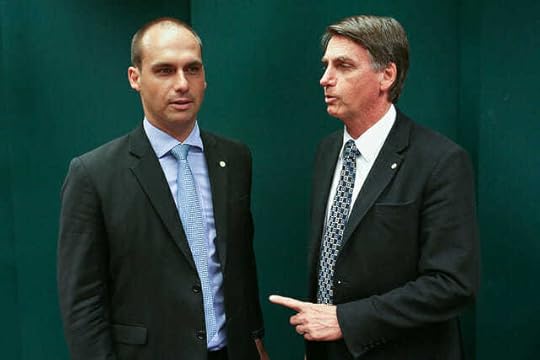
5 Ways Brazil's Bolsonaro Followed Trump's Playbook
by

Brazil's Jair Bolsonaro Is the Fascist Face of Neoliberalism
by
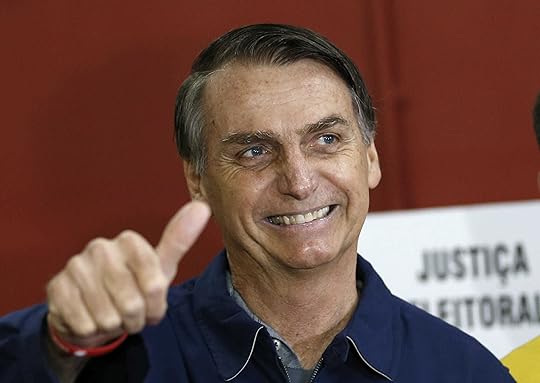
The CIA Has Its Fingerprints on Brazil's Election
by
Organized from the bottom up by teachers, high school and university students, through thousands of democratic assemblies across the country, communication between activists in the different towns and cities insured that the August 13 street protests were staggered throughout the day to achieve maximum impact. Starting in smaller cities during the morning rush hour, with protests numbering in the low thousands, they increased in size as the day progressed, with crowds of 30,000–50,000 in larger cities like Recife, culminating during the evening rush hour in Brazil’s three largest cities, with an estimated crowd of 100,000 shutting down Avenida Paulista in the heart of São Paulo’s financial district.
There, instead of the usual honking cars, groups of teenagers danced and sang things like, “I want education, to be intelligent, because for stupid we already have our president.” Thousands of older people came out in solidarity with the teachers and students, and the atmosphere was one of hope against Bolsonaro’s sub-fascist project, and its attempt to purge the education system of critical thinking through a revival of the old Nazi trope of “Cultural Marxism.”
In short, it seemed like the perfect feel-good event for newspapers like the Guardian and the New York Times to share with their liberal readers. After all, after the US, Brazil is the most populous, largest in area and wealthiest nation in the Americas. After all, both newspapers have taken editorial positions against Bolsonaro, and regularly criticize his environmental and human rights abuses. After all, both papers have run numerous articles celebrating the spirit of the young protesters in Hong Kong and Venezuela in recent months, complete with inspiring quotes and photographs from the ground.
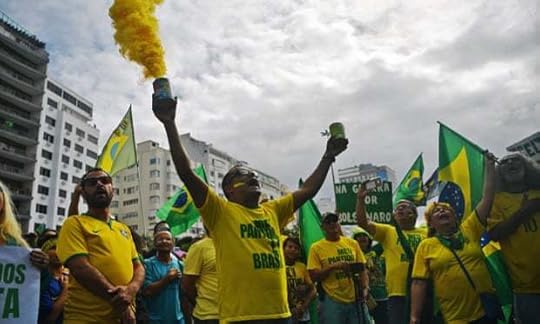
The Guardian (5/26/19) showed a pro-Bolsonaro rally photographed from below—concealing the small size of the crowd and giving the demonstrators a heroic pose.
Unfortunately, this didn’t turn out to be the case. The Guardian, which ran two articles about smaller pro-Bolsonaro protests in May, with photos of protesters shot from below to make them appear heroic, did not even mention it. The New York Times ran a 129-word stub from the AP that low-balled the number of cities where protests took place, and says they were smaller than the Education Tsunami protests in May (factually correct, but contextually misleading, since they were still huge).
The issue of under-reporting and ignoring protests by Brazil’s so-called “organized left”—the labor unions and popular social movements that make up the traditional support base for the Workers Party—is a historic problem. One of the main causes for this is that the organizations responsible for generating official crowd numbers in Brazil are its historically neofascist state military police forces.
Brazil’s military police, which run organized crime militias and death squads, sell weapons to the drug-trafficking gangs, and commit torture and summary executions at the rate of 5 per day in Rio de Janeiro alone, are responsible for providing crowd numbers. Brazil’s traditional media outlets, like Globo TV, which was created by the 1965–85 military dictatorship as a means of social control and are nearly as conservative, follow their lead. This explains why, for example, similar-sized protests for and against the illegal impeachment of President Dilma Rousseff in March 2015, could be reported in the media, respectively, as 1 million and 9,000.
Everyone in the foreign correspondent community knows that the Brazilian military police are not impartial judges of crowd size. When Anglo newspapers do report on progressive protests in Brazil, however, they tend to play along with the game.
During the lead up to the 2018 presidential election, hundreds of thousands of women took to the streets in cities around the world in the #NotHim protests against Bolsonaro. In São Paulo City, an estimated 150,000 came out to Largo da Batata, and protests took place in some 30 other cities across the state, which is home to around 20% of Brazil’s total population. The São Paulo State Military Police decided to simply not release crowd numbers. Others states followed suit, and zero was added for each of them into the total estimate.
The foreign correspondents knew this—it was clearly explained in all the Brazilian papers. Nevertheless, the New York Times spoke of “crowds in the tens of thousands” and the Guardian called it “thousands.” These artificially deflated numbers gave the false impression that women’s resistance to Bolsonaro was weaker than it really was.
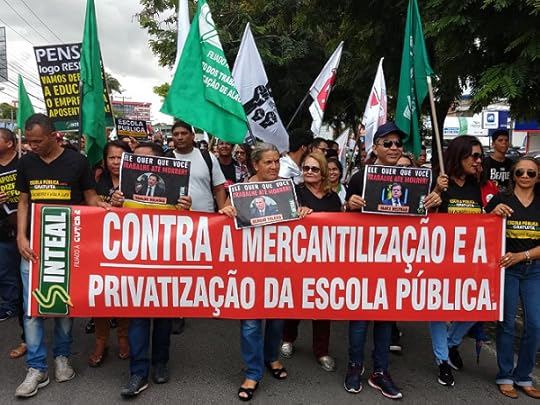
A photo of an anti-Bolsonaro protest in Alagoas from the Confederação Nacional dos Trabalhadores em Educação website (8/13/19).
Underreporting of left protests is such an ongoing problem in the Brazilian media that for the last five years, activist/media collectives like Midia Ninja and Jornalistas Livres, which have millions of social media followers, have sent volunteers to all of the major protests around the country to film and photograph crowd sizes. Labor unions now do the same, and everyone shares the information online.
When, for example, the National Education Workers Confederation announced, as it did on August 14, that protests took place in 211 cities, anyone could easily go onto their site and see photos and video evidence from each city backing their claim. So why don’t gringo journalists ever question the official numbers? Even more importantly, why would they decide not to report on events like the August 13 Education Tsunami at all?
Is it just sloppy reporting? Freelance journalist pay has dropped significantly in the last ten years, and many correspondents don’t have a full grasp of Portuguese. Could it just be that they are too inexperienced to question what is reported in Brazil’s ideologically compromised commercial media? Could their pay be so low that they just paraphrase articles from Brazilian newspapers?
The problem is bigger than individual flaws with foreign correspondents. Like Trump and British Prime Minister Boris Johnson, Jair Bolsonaro represents what George Monbiot refers to as a “killer clown” (Guardian, 7/26/19). According to Monbiot, clowns like Bolsonaro provide distraction and deflection for elites. “While the kleptocrats fleece us,” he says, “we are urged to look elsewhere.”
While the commercial media distracts us with horror stories about Jair Bolsonaro the killer clown, their corporate advertisers are making billions from the deregulation of pesticides and mining, petroleum and pension fund privatization in Brazil. You have to ask yourself if these newspapers really want Bolsonaro to leave office. Could wanting him to stick around be why they prioritize feel-bad click bait about Bolsonaro’s clownish behavior over showing solidarity with the people fighting against his government?
Regardless of the motives, one thing is for sure: Downplaying and ignoring organized resistance supports Bolsonaro’s sub-fascist project for Brazil, and the US corporations that benefit from it.

August 17, 2019
Dozens Dead or Hurt in Wedding Party Blast in Afghan Capital
KABUL, Afghanistan—A suicide-bomb blast ripped through a wedding party on a busy Saturday night in Afghanistan’s capital and dozens of people were killed or wounded, a government official said. More than 1,000 people had been invited, one witness said, as fears grew that it could be the deadliest attack in Kabul this year.
Interior Ministry spokesman Nusrat Rahimi told The Associated Press the attacker set off explosives among the wedding participants. Both the Taliban and a local affiliate of the Islamic State group carry out bloody attacks in the capital.
The blast occurred near the stage where musicians were and “all the youths, children and all the people who were there were killed,” witness Gul Mohammad said. One of the wounded, Mohammad Toofan, said that “a lot of guests were martyred.”
Officials were not expected to release a toll until daytime Sunday.
“There are so many dead and wounded,” said Ahmad Omid, a survivor who said about 1,200 guests had been invited to the wedding for his father’s cousin. “I was with the groom in the other room when we heard the blast and then I couldn’t find anyone. Everyone was lying all around the hall.”
Outside a local hospital, families wailed. Others were covered in blood.
The blast at the Dubai City wedding hall in western Kabul, a part of the city that many in the minority Shiite Hazara community call home, shattered a period of relative calm. On Aug. 7, a Taliban car bomb aimed at Afghan security forces detonated on the same road, killing 14 people and wounding 145 — most of them women, children and other civilians.
Kabul’s huge, brightly lit wedding halls are centers of community life in a city weary of decades of war, with thousands of dollars spent on a single evening.
“Devastated by the news of a suicide attack inside a wedding hall in Kabul. A heinous crime against our people; how is it possible to train a human and ask him to go and blow himself (up) inside a wedding?!!” Sediq Seddiqi, spokesman for President Ashraf Ghani, said in a Twitter post.
The wedding halls also serve as meeting places, and in November at least 55 people were killed when a suicide bomber sneaked into a Kabul wedding hall where hundreds of Muslim religious scholars and clerics had gathered to mark the birthday of the Prophet Muhammad. The Taliban denied involvement in an attack that bore the hallmarks of the Islamic State affiliate.
Saturday night’s explosion came a few days after the end of the Muslim holiday of Eid al-Adha, with Kabul residents visiting family and friends, and just before Afghanistan marks its 100th independence day on Monday under heavier security in a city long familiar with checkpoints and razor wire.
The blast comes at a greatly uncertain time in Afghanistan as the United States and the Taliban near a deal to end a nearly 18-year war, America’s longest conflict.
The Afghan government has been sidelined from those discussions, and presidential spokesman Seddiqi said earlier Saturday that his government was waiting to hear results of President Donald Trump’s meeting Friday with his national security team about the negotiations. Top issues include a U.S. troop withdrawal and Taliban guarantees not to let Afghanistan become a launching pad for global terror attacks.
While the Taliban earlier this year pledged to do more to protect civilians, it continues to stage deadly attacks against Afghan security forces and others in what is seen by many as an attempt to strengthen its position at the negotiating table.
The conflict continues to take a horrific toll on civilians. Last year more than 3,800, including more than 900 children, were killed in Afghanistan by the Taliban, U.S. and allied forces, the Islamic State affiliate and other actors, the United Nations said.

At Least 13 People Arrested at Portland, Oregon, Protests
PORTLAND, Ore.—Police arrested at least 13 people and seized metal poles, bear spray and other weapons Saturday as hundreds of far-right protesters and anti-fascist counter-demonstrators swarmed downtown Portland, Oregon.
Authorities closed bridges and streets to try to keep the rival groups apart. The city’s mayor said the situation was “potentially dangerous and volatile,” and President Donald Trump tweeted “Portland is being watched very closely.”
As of early afternoon, most of the right-wing groups had left the area via a downtown bridge. Police used officers on bikes and in riot gear to keep black-clad, helmet- and mask-wearing anti-fascist protesters — known as antifa — from following them.
But hundreds of people remained downtown and on nearby streets, and there were skirmishes throughout the day. Police declared a gathering of mostly left-wing protesters near Pioneer Courthouse Square a “civil disturbance” and told people to leave.
One person was injured and transported via ambulance, and three other people were evaluated by medics, Portland Police spokeswoman Lt. Tina Jones said. The injuries were minor, she said.
Jones said at one point there were about 1,200 on the streets, but that number had fallen to about 400 late in the afternoon.
The events began late Saturday morning. Flag-waving members of the Proud Boys, Three Percenters militia group and others gathered downtown, some also wearing body armor and helmets. Police said they had seized the weapons, including shields, from multiple groups as they assembled along the Willamette River, which runs through the city.
More than two dozen local, state and federal law enforcement agencies, including the FBI, were in the city for the right-wing rally that was expected to draw people from across the country. Portland Police said all of the city’s 1,000 officers would be on duty for the gathering that was hyped on social media and elsewhere for weeks.
In the days leading up to the event, Portland Mayor Ted Wheeler said people who espoused hate or engaged in violence were “not welcome.”
In a Saturday morning tweet, Trump wrote: “Hopefully the Mayor will be able to properly do his job.”
He also wrote that “major consideration is being given to naming ANTIFA an ‘ORGANIZATION of TERROR.'”
But it wasn’t immediately clear what he meant by that as there’s no mechanism for the United States government to declare a domestic organization a terror group. The State Department maintains a list of designated foreign terrorist organizations, such as al Qaida, but there’s no comparable designation or list for American groups.
Wheeler responded to the president’s tweet in an interview with CNN, saying, “frankly, it’s not helpful.”
Wheeler added: “This is a potentially dangerous and volatile situation, and adding to that noise doesn’t do anything to support or help the efforts that are going on here in Portland.”
Not all who gathered Saturday were with right-wing groups or antifa. Also on hand were people dressed in colorful outfits and those who attended a nearby prayer service, holding signs that said slogans such as “No Trump, No NRA.”
Self-described anti-fascists had vowed to confront the rally, while leaders from the far right urged their followers to turn out in large numbers to protest the arrests of six members of right-wing groups in the run-up to the event.
Patriot Prayer’s Joey Gibson, who organized similar rallies in 2017 and 2018 that erupted in clashes, surrendered Friday on an arrest warrant for felony rioting. He was at a confrontation that broke out on May 1 outside a bar where antifa members had gathered after a May Day demonstration.
In a video he livestreamed on Facebook, Gibson accused the police of playing politics by arresting him but not the masked demonstrators who beat up conservative blogger Andy Ngo at a June 29 rally that drew national attention.
A video of that attack went viral and led the Proud Boys, who have been designated a hate group by the Southern Poverty Law Center, to organize Saturday’s event.
Police continue to investigate several incidents from clashes on May 1 and June 29 and are politically neutral, Jones said.
In addition to the Proud Boys and Three Percenters, the white nationalist American Guard also said it would have members in Portland.
The Oath Keepers, another far-right militia group, said in a statement they were pulling out of the rally because organizers have not done enough to keep white supremacist groups away.
Authorities asked residents not to call 911 unless it’s a life-threatening emergency and to stay away from the heart of downtown.

August 16, 2019
‘Easy Rider’ Star and Writer Peter Fonda Has Died at 79
LOS ANGELES — Actor Peter Fonda, the son of a Hollywood legend who became a movie star in his own right after both writing and starring in the counter-culture classic “Easy Rider,” has died. His family said in a statement that Fonda died Friday morning at his home in Los Angeles. He was 79.
The official cause of death was respiratory failure due to lung cancer.
“In one of the saddest moments of our lives, we are not able to find the appropriate words to express the pain in our hearts,” the family said in a statement. “As we grieve, we ask that you respect our privacy.”
Related Articles

Jane Fonda Is a Living, Breathing Rebuke of the Patriarchy
by Robert Scheer
Born into Hollywood royalty as Henry Fonda’s only son, Peter Fonda carved his own path with his non-conformist tendencies and earned an Oscar nomination for co-writing the psychedelic road trip movie “Easy Rider.” He would never win that golden statuette, but would later be nominated for his leading performance as a Vietnam veteran and widowed beekeeper in “Ulee’s Gold.”
Fonda was born in New York in 1940 to parents whose personas were the very opposite of the rebellious images their kids would cultivate. Father Henry Fonda was already a Hollywood giant, known for playing straight-shooting cowboys and soldiers. Mother Frances Ford Seymour was a Canadian-born U.S. socialite.
He was only 10 years old when his mother died. She had a nervous breakdown after learning of her husband’s affair and was confined to a hospital. In 1950 she killed herself, slashing her throat with a razor. It would be about five years before Peter Fonda learned the truth behind her death.
Fonda accidentally shot himself and nearly died on his 11th birthday. It was a story he told often, including during an acid trip with members of The Beatles and The Byrds during which Fonda reportedly said, “I know what it’s like to be dead.”
John Lennon would use the line in the Beatles song “She Said She Said.”
Fonda went to private schools in Massachusetts and Connecticut as a child, moving on to the University of Nebraska in his father’s home state, joining the same acting group — the Omaha Community Playhouse — where Henry Fonda got his start.
He then returned to New York and joined the Cecilwood Theatre, getting small roles on Broadway and guest parts on television shows including “Naked City” and “Wagon Train.”
Fonda had an estranged relationship with his father throughout most of his life, but said that they grew closer over the years before Henry Fonda died in 1982.
“Peter is all deep sweetness, kind and sensitive to his core. He would never intentionally harm anything or anyone. In fact, he once argued with me that vegetables had souls (it was the ’60s),” his sister Jane Fonda said in her 2005 memoir. “He has a strange, complex mind that grasps and hangs on to details ranging from the minutiae of his childhood to cosmic matters, with a staggering amount in between. Dad couldn’t appreciate and nurture Peter’s sensitivity, couldn’t see him as he was. Instead he tried to shame Peter into his own image of stoic independence.”
Although Peter never achieved the status of his father or even his older sister, the impact of “Easy Rider,” which just celebrated its 50th anniversary, was enough to cement his place in popular culture.
Fonda collaborated with another struggling young actor, Dennis Hopper, on the script about two weed-smoking, drug-slinging bikers on a trip through the Southwest as they made their way to New Orleans for Mardi Gras.
On the way, Fonda and Hopper befriend a drunken young lawyer — Jack Nicholson in a breakout role — but raise the dander of Southern rednecks and are murdered before they can return home.
Fonda’s character Wyatt wore a stars-and-stripes helmet and rode a motorcycle called “Captain America,” re-purposing traditional images for the counter-culture.
Actress Illeana Douglas tweeted her condolences Friday with the hashtag “RIPCaptainAmerica.”
“‘Easy Rider’ depicted the rise of hippie culture, condemned the establishment, and celebrated freedom,” Douglas wrote. “Peter Fonda embodied those values and instilled them in a generation.”
Fonda had played bikers before “Easy Rider.” In the 1966 Roger Corman-directed “Wild Angels,” in which he plays Heavenly Blues, leader of a band of Hells Angels, Fonda delivers a speech that could’ve served as both a personal mantra and a manifesto for the youth of the ’60s.
“We wanna be free!” Fonda tells a preacher in the film. “We wanna be free to do what we wanna do. We wanna be free to ride. We wanna be free to ride our machines without being hassled by the man! And we wanna get loaded!”
Fonda produced “Easy Rider” and Hopper directed it for a meager $380,000. It went on to gross $40 million worldwide, a substantial sum for its time.
The film was a hit at Cannes, netted a best-screenplay Oscar nomination for Fonda, Hopper and Terry Southern, and has since been listed on the American Film Institute’s ranking of the top 100 American films. The establishment gave its official blessing in 1998 when “Easy Rider” was included in the United States National Film Registry for being “culturally, historically, or aesthetically significant.”
In 1969, he told The Associated Press that, “As for my generation, it was time they started doing their own speaking. There has been too much of the ‘silent majority’ — at both ends of the generation gap.”
Although he did reflect later in a 2015 interview with The Hollywood Reporter that it may have impacted his career prospects: “It certainly put a nail in the coffin of ‘the next Dean Jones at Disney.'”
Fonda’s output may have been prolific, but was not always well-regarded which he was acutely aware of. But he said that “Ulee’s Gold,” which came out in 1997, was the “most fun” he’d ever had making a movie. He wore the same wire-rimmed glasses his father wore in “On Golden Pond” in the role, although he said beyond that he was not channeling Henry Fonda in the performance. He lost out on the Oscar to Nicholson, who won for “As Good as It Gets.”

Customs and Border Protection Outage Snarls Major Airports
DALLAS — Travelers flying into the United States on Friday ran into long lines at major airports nationwide because of a temporary computer outage that affected the U.S. Customs and Border Protection agency.
Airports warned travelers — both Americans returning home and foreign visitors — of delays, and some travelers tweeted photos and videos of huge lines.
A CBP spokeswoman said the systems were running again by early evening on the East Coast.
The agency didn’t precisely describe the breakdown, but the spokeswoman said there was “no indication of any nefarious activity.” She said officers were able to access security-related databases and maintain security standards while screening people manually.
Rebekah Tromble, an associate professor at George Washington University, tweeted a video clip in which she panned over the arrival hall at Dulles International Airport in northern Virginia. She estimated there were at least 5,000 people packed into the hall.
Tromble was asked if she could see whether customs agents were screening people manually.
“It’s not clear from my vantage point. I’m still too far back in line,” she answered.
Airports in Los Angeles, Dallas-Fort Worth, New York and elsewhere notified travelers of potential delays at the beginning of one of the last weekends of the summer vacation season.
The port authority that operates New York’s JFK Airport and the airport in Newark, New Jersey, said additional staff and police officers monitored situation and helped where needed. Los Angeles International Airport said it sent staffers to CBP areas to help direct travelers.
___
Verena Dobnik in New York contributed to this report.

Chris Hedges's Blog
- Chris Hedges's profile
- 1922 followers



